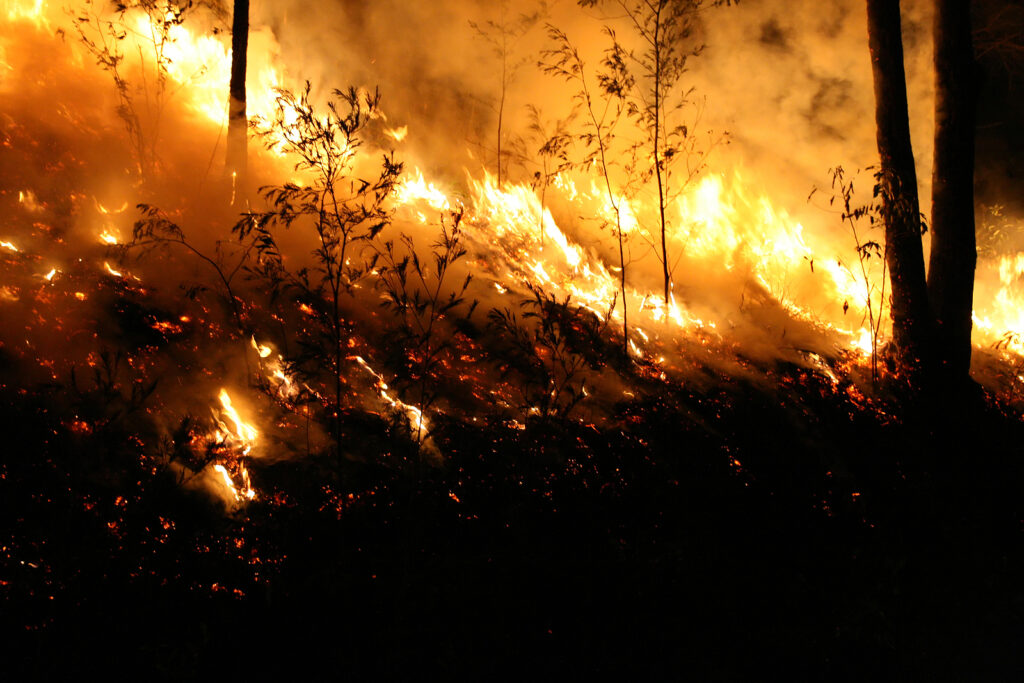The Northern Wilds’ stunning landscapes and abundant boreal forests are a haven for nature lovers and outdoor recreation. This beauty, however, comes with a natural hazard: wildfires.
The Firewise program, a crucial initiative embraced by the Emergency Services of Cook and Lake County and the State of Minnesota, is more than just a program. It plays a significant role in protecting lives, property, and the forest from the devastating effects of wildfires while making room for fire’s positive effects. The Firewise programs here in the north country aren’t just theoretical concepts.
The program, administered by the National Fire Protection Association (NFPA), a renowned organization with a century-long history of tackling global safety challenges, offers straightforward and practical steps for communities to minimize the risk of wildfire destruction.
The U.S. Forest Service, the Department of the Interior, and the National Association of State Foresters sponsor the Firewise USA program.
Under the Department of Natural Resources (MNDNR), the Minnesota Firewise Program works with communities throughout the state to help prepare for and prevent catastrophic wildfires. It involves community groups, including fire and emergency services, schools, and local interest groups.
The emergency services of Cook (Cook County Firewise) and Lake (Lake County Fire Safe Council) counties have adopted this program, recognizing the importance of community-level action in wildfire safety.
Working in collaboration with Firewise Minnesota, the two counties share a Firewise coordinator, Aaron Mollin-Kling.
Mollin-Kling grew up in the Twin Cities. After working in restaurant management and carpentry, he grew tired of city life and moved to Ely to attend the two-year forest technician program at Vermilion Community College (VCC).
As a student at VCC, he interned with the Lake County Fire Safe Council, and after completing his coursework, he became the coordinator a few years ago. Seeing that Cook County was seeking a Firewise coordinator, he put his name in for consideration, and he became the Cook County Firewise coordinator last year as well.

| SUBMITTED
Both counties’ positions are contracted jobs, and even combined, they are considered part-time. Mollin-Kling foresees a time in the not-too-distant future when each county will support a full-time coordinator.
The Firewise programs focus on three key areas: education, risk reduction, and community engagement.
A cornerstone of the program is educating residents about wildfire risks, mitigation strategies, and the proper role of wildfires in forest management. The official websites of both organizations (firesafelake.org/firewise and cookcountyfirewise.org) offer a wealth of resources, including brochures, videos, and workshops. Homeowners will find downloadable materials like “How to Prepare Your Home for Wildfires” and “50 Things You Can Do to Protect Your Property from Wildfire.”
These resources explain concepts like creating defensible space around homes, proper vegetation management, and fire-resistant building practices.
Moving beyond education to risk reduction, Firewise actively organizes for residents to take action.
It manages regional locations to collect brush and other potential fuels for controlled disposal. It also manages a list of private contractors experienced in fuel removals and disposal.
The program offers free Firewise property assessments conducted by trained professionals. These assessments identify areas of vulnerability around a home and recommend specific mitigation steps. Residents can also use the Firewise Communities/USA Recognition Program to work towards making their entire community a certified Firewise area.
Cook County Firewise and Lake County Fire Safe Council recognize the power of the community in wildfire preparedness and management. They actively engage with residents through informative meetings, a platform for people to learn about wildfire risks, get answers to questions, and connect with local fire departments and resource managers.
The Firewise program is funded by grants from various state and federal agencies. “Funding is an ever-evolving challenge in this position,” Mollin-Kling said. He indicated that fundraising makes up about a third of his workload. The balance of his time is spent managing brush reduction efforts and organizing and presenting events to educate and encourage people to reduce wildfire risks.
“Managing in a Firewise way improves the overall condition of the forest,” Mollin-Kling said. “I thank everybody for getting involved and improving our area,” he added. “I hope they realize that they make a difference.”
By implementing the Firewise program’s strategies, property owners can take concrete steps to safeguard their homes and manage vegetation. This proactive approach significantly reduces the risk of property ignition during a wildfire. Creating defensible space around buildings protects individual properties and minimizes the potential for fire to spread to neighboring areas.
Firewise education empowers residents, giving them the tools and knowledge to prepare their homes and families for a wildfire event proactively. This includes creating an evacuation plan, assembling an emergency kit, and staying informed about fire danger. By being prepared, residents can face the threat of wildfires with confidence and control.
Firewise fosters a strong sense of community ownership in wildfire preparedness. By working together, residents create a more fire-adapted community, minimizing the overall impact of wildfires. This shared responsibility not only strengthens the community bond but also ensures a safer environment for all, fostering a sense of unity and resilience in the face of wildfires.
If you are a property owner in the Arrowhead region, think about ways to Firewise your property this summer. Most homes that burn during a wildfire are ignited by embers landing on the roof, in gutters, or under decks and porches. Gutters should be regularly cleaned, the area under open decks should be raked, and dry grass and shrubbery should be removed.
Contact the Firewise program in your county or your local fire department to gain an in-person assessment of risks at your property.
Coordinator Mullin-Kling says, “The first focus needs to be creating a 30-foot fire barrier around your structures.”
Creating a fire barrier includes thinning evergreen trees and removing ladder fuels that allow a fire to climb from the ground into the tree canopy. Standard ladder fuels include tall grasses, shrubs, and tree branches, both living and dead.
It is also essential to ensure that your property’s access road or driveway has a 14-15-foot-wide clearance for emergency vehicles.
Wildfire is a natural part of our area’s ecosystem. Through education, risk assessment and reduction strategies, and community engagement, the Firewise program equips residents with the knowledge and tools to coexist with wildfire. By embracing Firewise principles, residents protect their homes and contribute to a future where the natural beauty of the forest and the safety of its communities are preserved.

